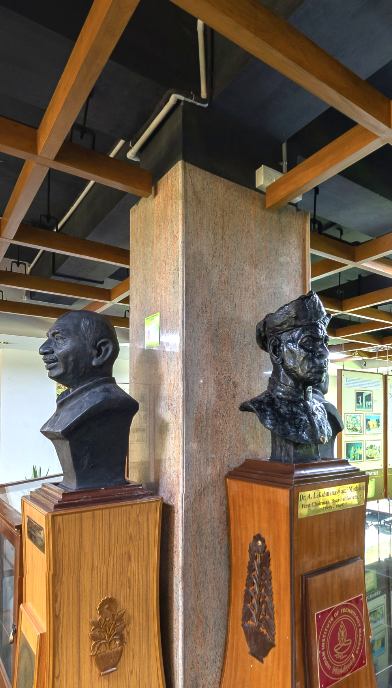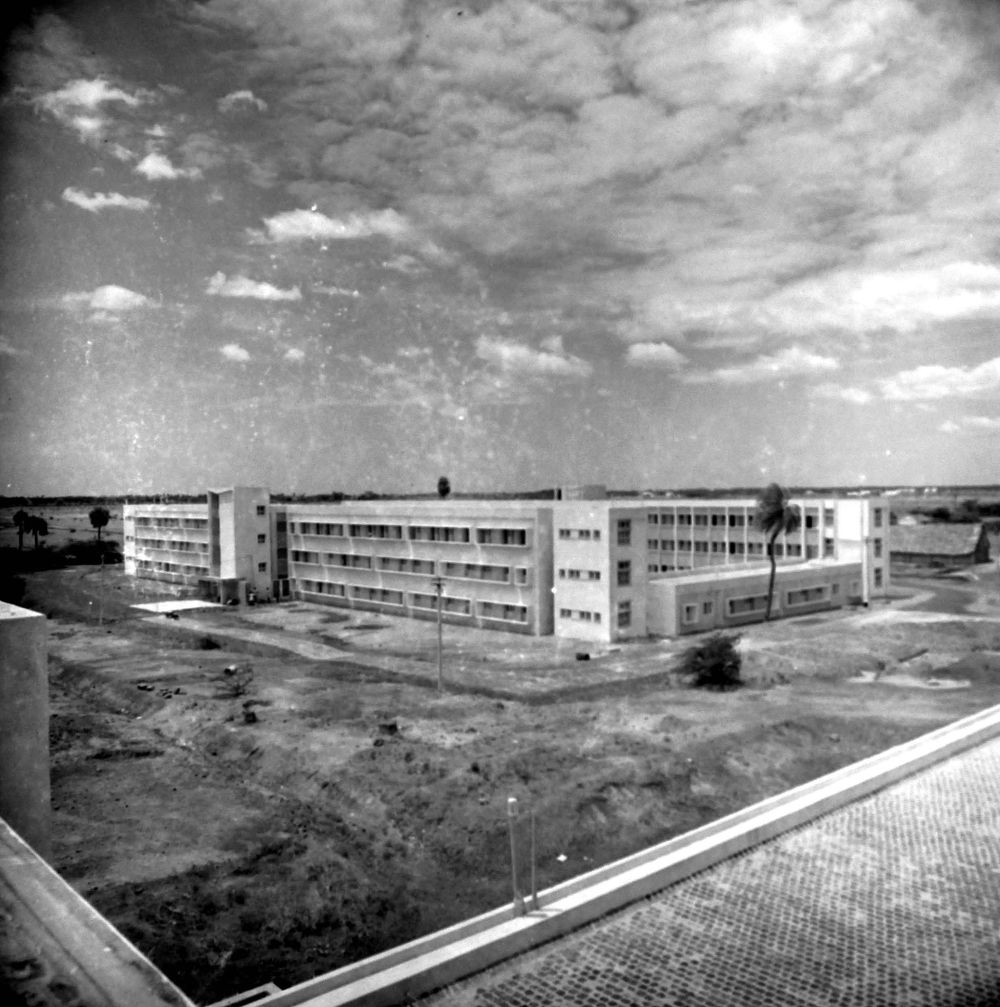
-
Mandakini Hostel
Nov 02, 2017
Kumaran Sathasivam
Mandakini Hostel, just shy of its 50th ‘birthday’, is to be replaced by a new structure that can accommodate 1200 students.

Mandakini Hostel: Photograph in the archives of the Heritage Centre. The album containing this and similar pictures of the hostel also has photographs of the Administration Block. Both the hostel and Ad Block were probably newly constructed when the pictures were taken. So the year must have been1968. The photo seems to have been taken from the terrace of Ganga Hostel.
‘Mandak’ was the last of the first set of hostels at IIT Madras, built in the 1960s. It was inaugurated on 18 August 1968 by Mrs. Sushila Ramachandran, wife of Director A. Ramachandran. Alakananda Hostel, the closest ‘sibling’, had been inaugurated three years previously, on 20 July 1965. It would be another 12 years or so before another hostel was built on campus.
Geographically speaking too, Mandakini was the last hostel, being located at the end of the hostel avenue, in the south-eastern corner of the campus.
A satellite image of the campus taken some time after the completion of Ganga and Jamuna and before the construction of Alakananda shows that the Mandak site was a rather damp corner—there are two ponds that are decidedly close to it. So it is hardly surprising that Mandakini was affected more than any other hostel by the December 2015 deluge.
I stayed in Mandak in 1981–1982 as a fresher, as did most of my batch mates —the first group of students of the 4-year B.Tech. programme. The previous year too, the ‘freshies’—those of the last batch of 5-year B.Tech. students— had been accommodated in Mandakini Hostel. Incidentally, Dr. Chandramouli Visweswariah of that batch made available to the Heritage Centre copies of the wall magazine that they brought out in 1981, The Mandak Rag. These we have digitised.
As it happens, Mandakini had always been a freshman hostel. Prof. Ramani, of the Department of Humanities, who was the warden of the hostel from 1973 to 1975, says that from the very beginning, Mandakini Hostel was for accommodating first-year students.
But the freshman tradition of Mandakini Hostel ended in the 1980s. The 1987 B.Tech. batch were the last set of students to stay at Mandakini in their first year (1983–1984). Actually, some students of that batch stayed backed in Mandak and continued to be accommodated there right through their 4- year course at IIT Madras.
Talking of traditions, Mandakini Hostel had a beautiful garden, tended with care by the gardener Mr. Kondaiah, in the early 1980s. Every year, this garden took part in an annual garden competition which was, I believe, conducted by the Madras Horticultural Society. Suffice it to say that Mandak won the first prize with monotonous regularity.
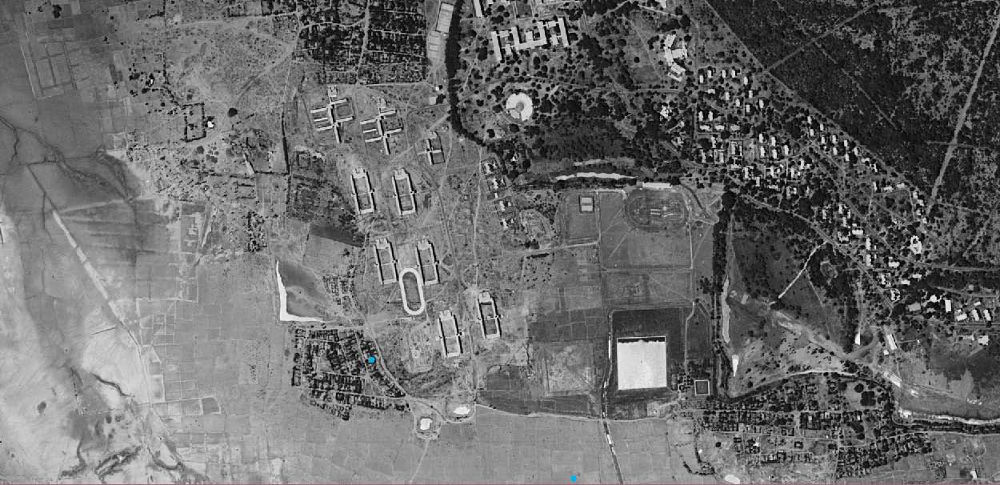
Satellite image of the IIT Madras campus taken in the 1960s. The hostels, the skating rink, OAT, HSB and an oxidation pond are clearly seen. There are two ponds (circled in blue) that seem rather close to the Mandak site.
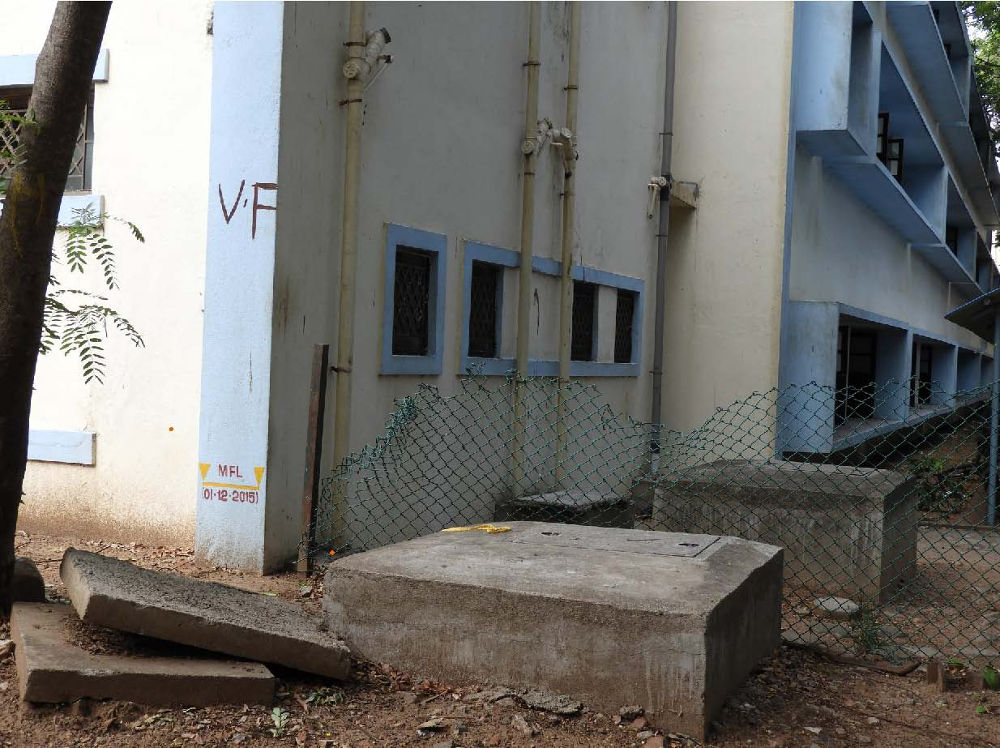
The maximum flood level of December 2015 marked on the walls of Mandak. Observe the windows of the ground floor, to the right in the picture. Did the flood waters flow in through the windows? Photograph taken in June 2017
Since we are on the theme of traditions, it would not be out of place to mention that it was customary for Mandakini Hostel to have a somewhatunconventional painting scheme. My recollection of the good old hostel is that it sported a bold red-and-white pattern, reminiscent of south Indian temples or a certain brand of toothpaste, depending on your point of view. Campastimes informs us that when Mandakini Hostel was inaugurated in 1968, it was ‘dressed in grey and pink’. You could not say that by looking at the early picture we have in the archives though because ours is a blackand-white photograph.
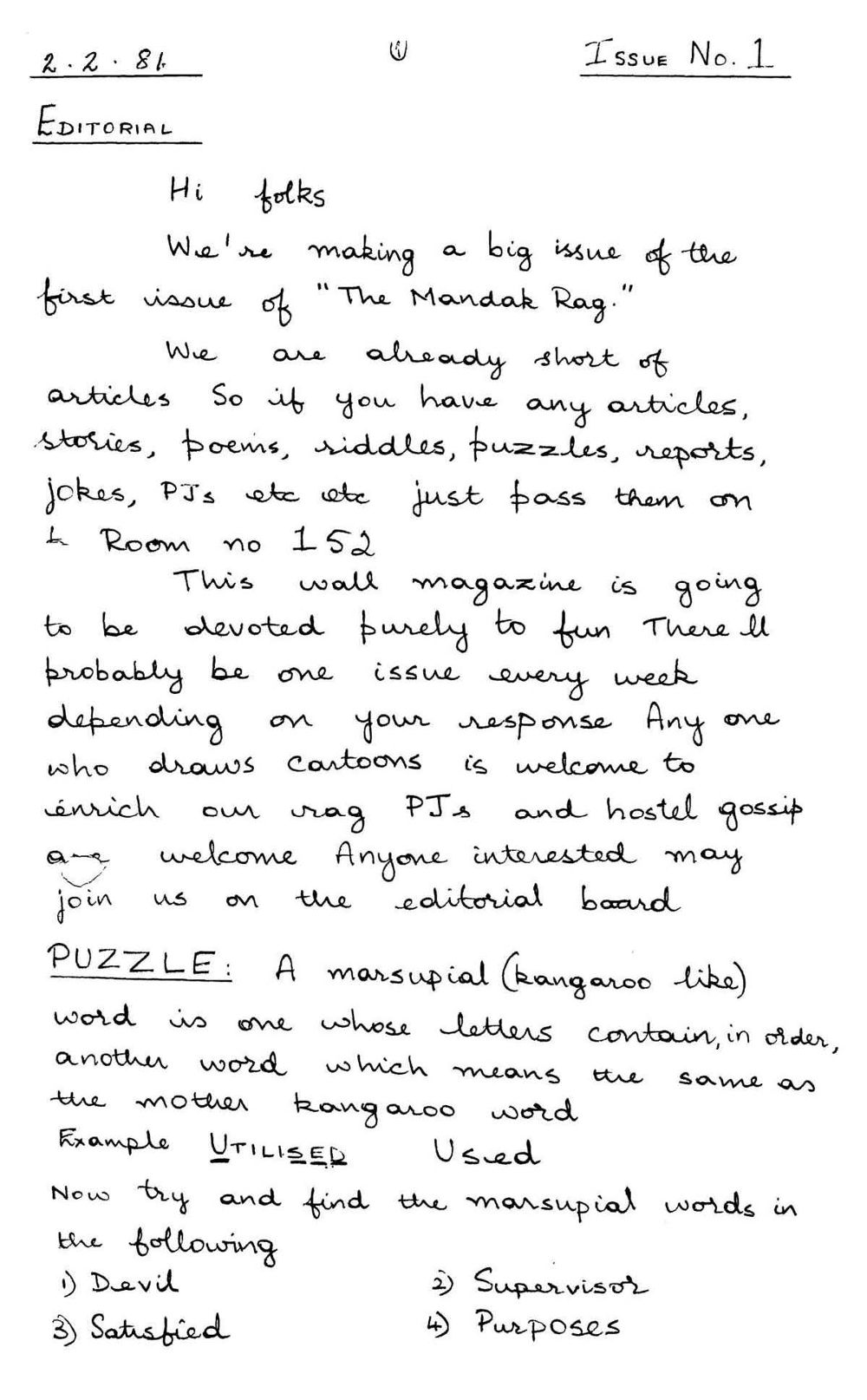
The Mandak Rag — issue 1, page 1. It bears the date 2 February 1981.
I went over to Mandak to give it a dekko recently. The old hostel was painted in off-white and watery blue. Additional rooms had been constructed above the common room and mess at some time and all the rooms renumbered so that 221, where I had stayed, was now 244. On the whole, the hostel had grown quite faded and staid.
I took a picture of Mandak from the terrace of Ganga Hostel to compare the view today with the old picture. How different everything is! It was all so different that you could have conducted a ‘spot the similarities’ contest with the two photographs, the old and the new!
The area around the hostel was bare in 1968; so much vegetation has come up around it since that you can hardly see Mandak now. And the neighbourhood of the campus has changed too—a great many tall buildings have sprung up.
But do you know what, there is a constant in the two pictures: a single date palm tree. This is seen quite clearly in the older photograph, standing near a common-room window. In the recent picture too, there is a date palm at the same location, but you can just see the crown of this date palm, and that if you look closely. It has to be the same tree, hasn’t it?

View of Mandakini Hostel from the terrace of Ganga Hostel, June 2017. The head of the venerable date palm is circled in green.
The tree in the old photograph seems to have reached its full height. So just how old was it at the inauguration of the hostel. Is it a hundred years old now?
Somehow, it is a happy thought that an ancient tree has been standing near Mandak for a half-century, watching thousands of students come and go.
Your response to Letter from Heritage Centre is welcome. Please send mail to heritage@iitm.ac.in
The Heritage Centre is located in the ground floor of the Administration Building, IIT Madras. It is open on weekdays from 9.30 am to 5.30 pm.
- Contribute
to the Centre -
Monetary
Support - Digital
Material

